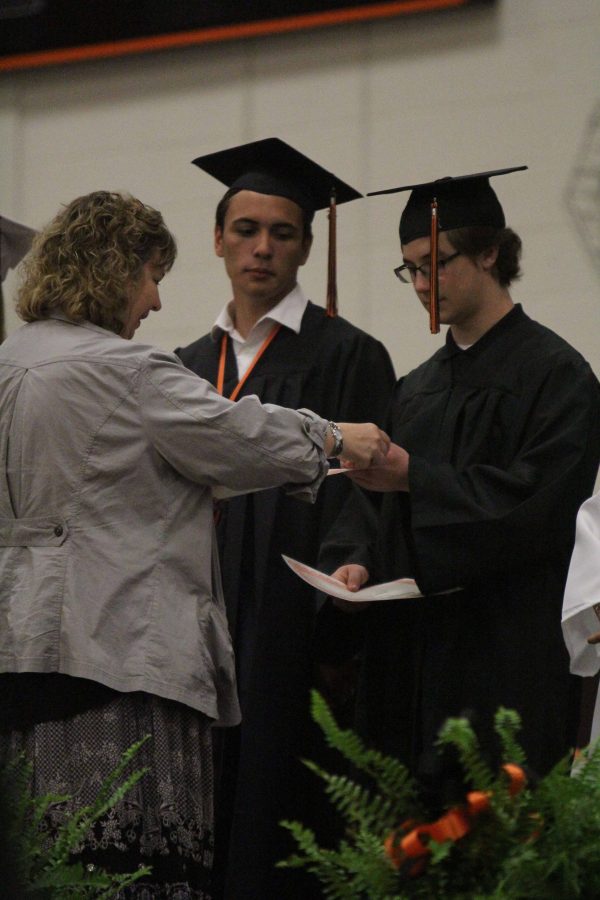Latin honors to replace Top 10 for the class of 2016
PHOTO Maddie Roy
2015 graduate Nick Farella receives his certificate and pin for being in the Top Ten at last year’s academic honors assembly. The Class of 2016 will be the first in Fenton High history with the opportunity to graduate with Latin honors “cum laude,” “magna cum laude” or “summa cum laude.” This switch was made because of the transition to weighted grades in advanced classes.
March 24, 2016
When seniors are recognized at graduation on June 12, the Top 10 will not be honored.
Instead, this year’s graduating class will be the first in many years to receive weighted grades for taking/passing an AP or IB class. Because of this, Principal Mark Suchowski did not want to continue the competitiveness of the Top 10 so he initiated the idea of “cum laude” which he passed on to the superintendent and then students and parents.
“The weighted grades allow for more students to excel academically; and with the new system, we are not limiting the number of students recognized,” Suchowski said. “In the past, there were students who were number 11, and only hundredths of a point away from number 10, but there just was not anything we could really do about it.”
The new honorary system for academic achievement at graduation is called “cum laude.” It is a Latin term that means “honor.”
“I think the new system makes things more general and therefore less competitive for people in the Top 10,” senior Michael Fabatz said. “I would have been valedictorian if the weighted grade system hadn’t been introduced, so it is difficult to agree with the decisions of the administration to switch to a weighted grade point average. My mom was valedictorian, so I grew up with the hopes of matching her accomplishment and spent the first three years of high school working very hard to achieve this goal. I studied for every test, turned in all my homework and threw myself into extracurriculars which often meant sacrificing my free time and social life.”
Students receiving the “cum laude” honor have to maintain between a 3.5 and 3.7 GPA during their four years of high school. “Magna cum laude” or “great honor” requires between a 3.8 and a 3.9. For the “highest honor” or “summa cum laude” students have to maintain a 4.0 or higher.
“The only disadvantage is more for me and not the students,” Suchowski said. “Second semester for seniors now counts, so we will be scrambling after final exams to do the rankings which allows us for less time than usual.”
Even though the Top 10 no longer exists, the students with the two highest GPAs will still be valedictorian and salutatorian. Suchowski estimated the amount of awards to be given out and it is around 50 or 60 students. The number will not be final until after the last marking period.








